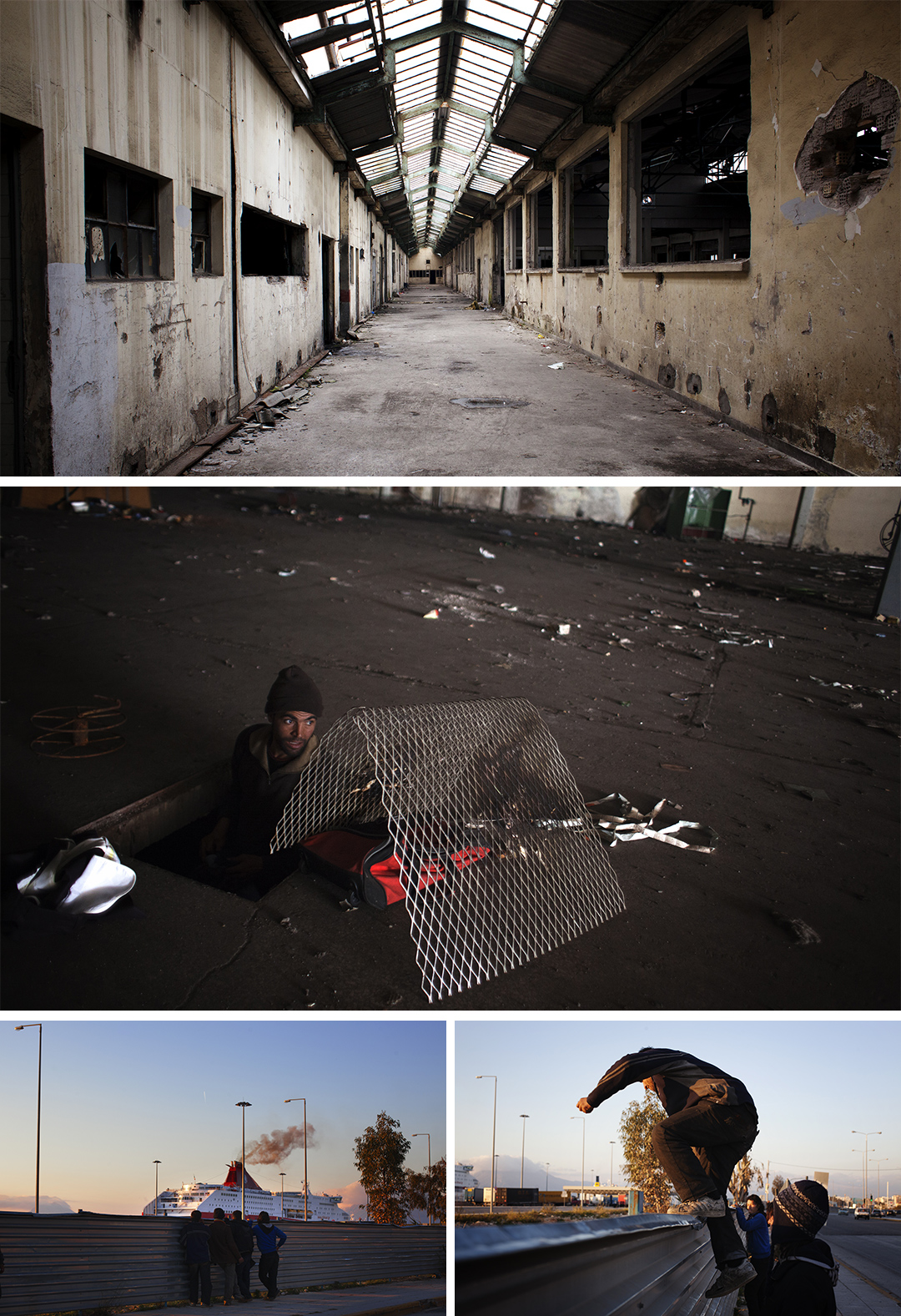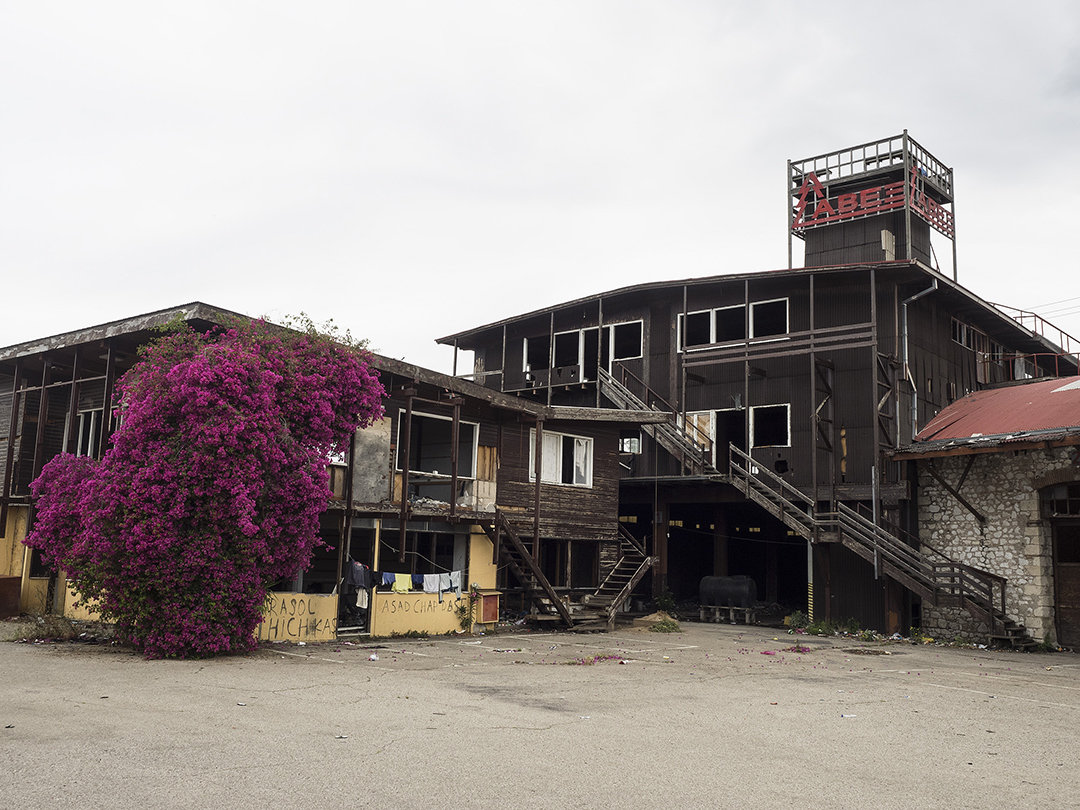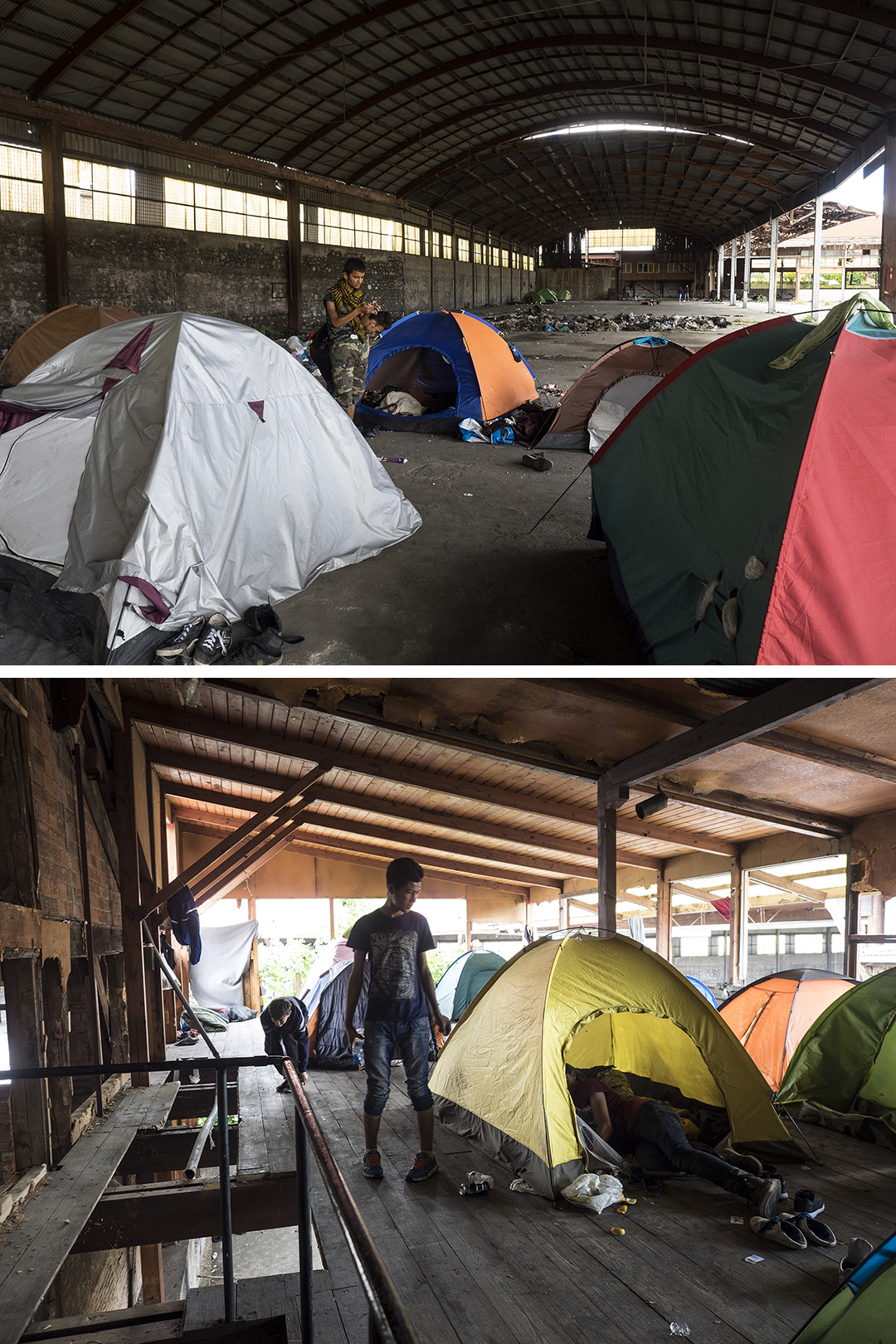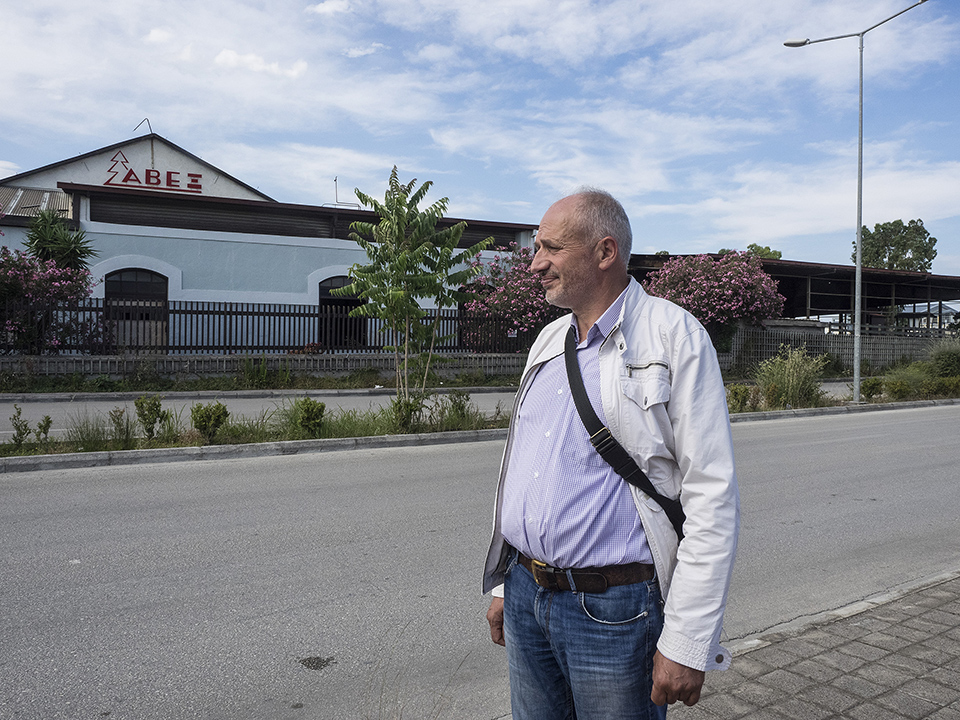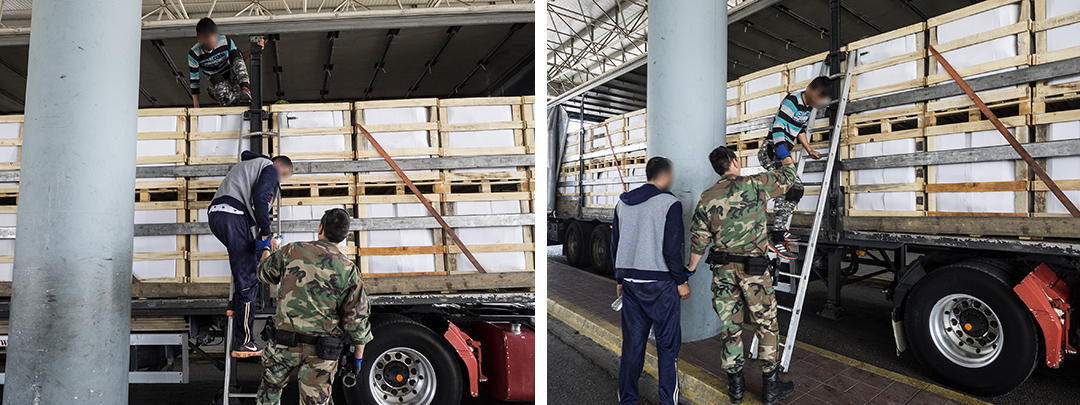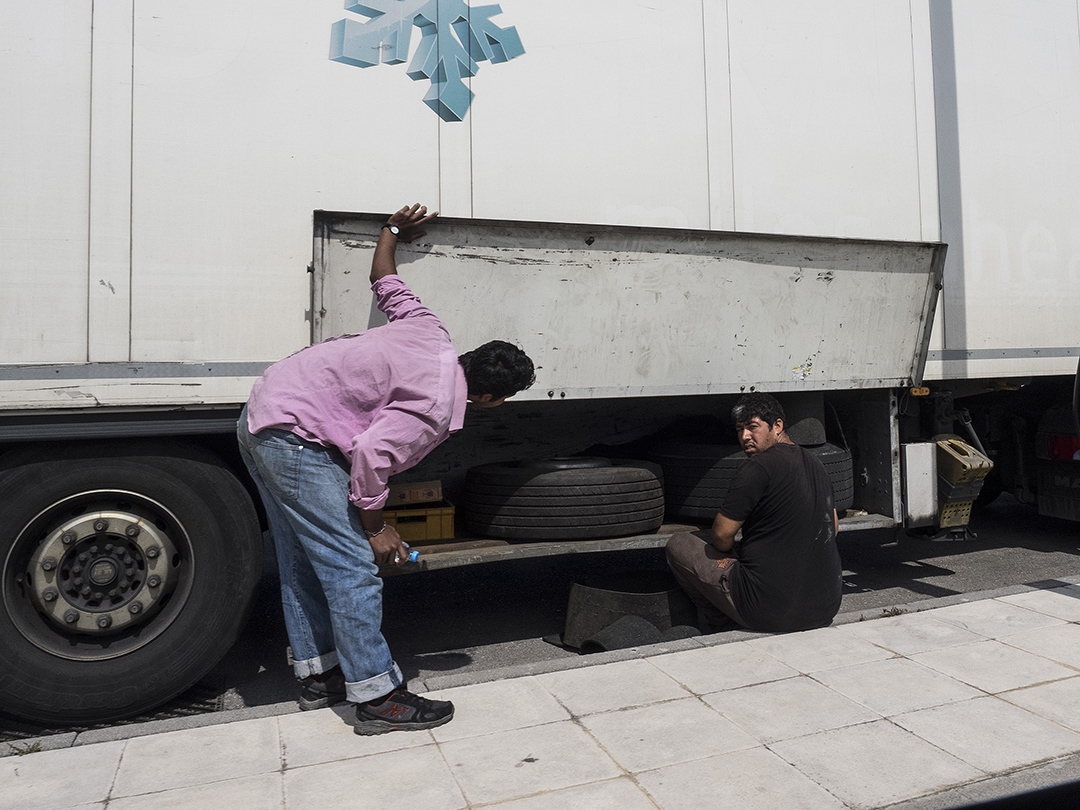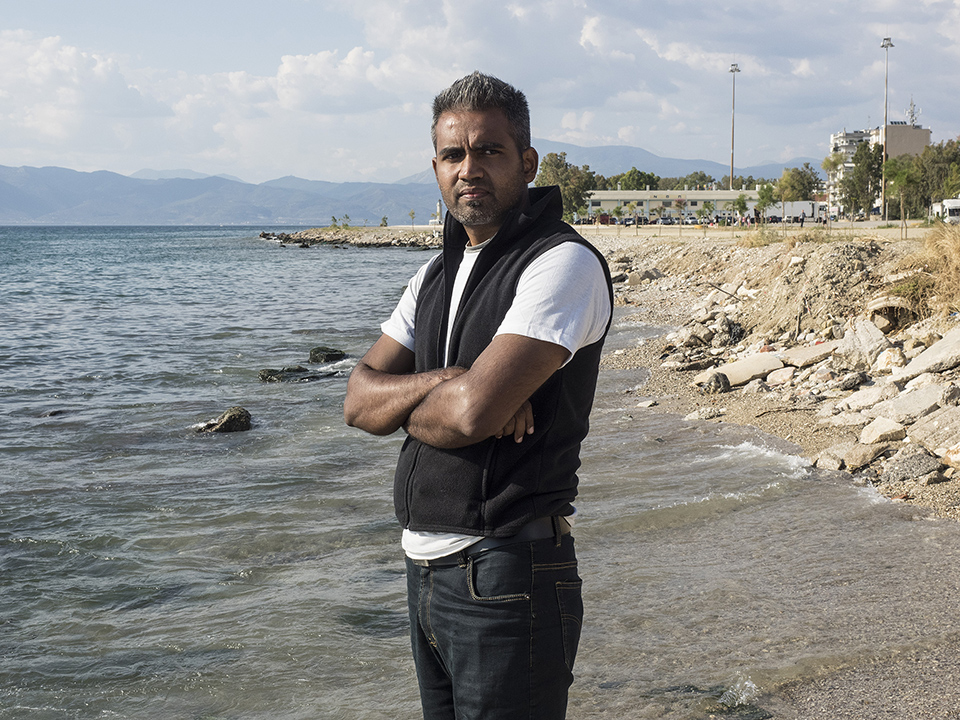Risking life and limb for a way out of Greece
Patra port has become a major gateway for undocumented migrants and refugees looking to get deeper into the European Union.
SPECIAL REPORT 11.07.2017 • REPORTING: YIANNIS PAPADOPOULOS • PHOTOGRAPHS: ENRI CANAJ • VIDEO EDITING: GOGO BEBELOU
He had spent two whole days in a drawn-out group escape attempt at Patra port: dashing across the street, scrambling up the first row of fencing and then hunkering down out of sight. Some carried planks they hoped to wedge into a truck's undercarriage so it could carry them away onto a ferryboat. Others tried to cling onto the back of the truck cabs with bare hands. But every time they heard a patrol car's siren they would scatter, only to regroup and try again later.

